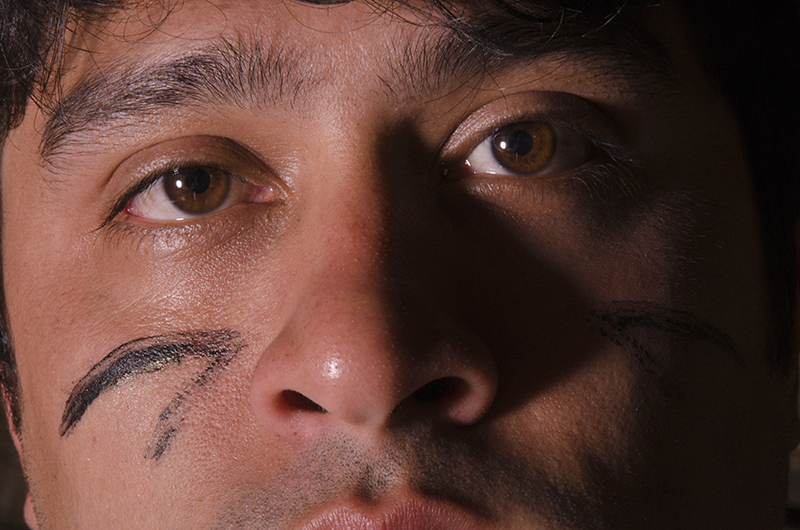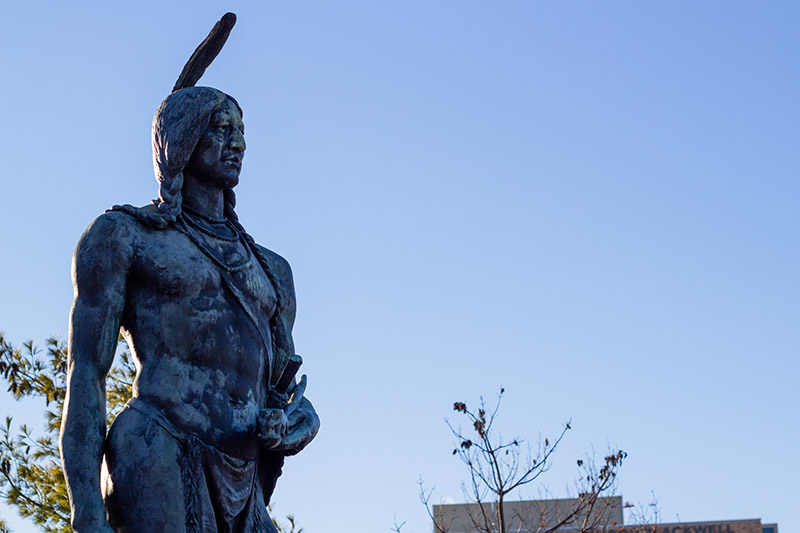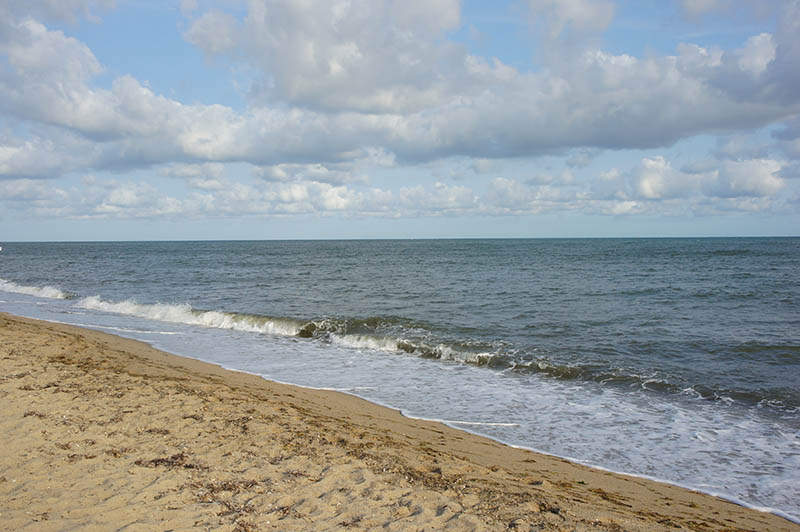

- Contact Us
- Search
-
Mayflower400 partner destinations:
Frank James and the history of the National Day of Mourning
Fifty years ago, a proud Native American man called Frank James took a stand.
He took a stand against centuries of history that told a story that simply was not true. A legacy that gave his people no voice.
In 1970 Frank James was the leader of the Wampanoag, the people who in 1620 watched as a strange ship from the east arrived on the coast of their lands.
Some 350 years on, he refused to be silenced about the treatment of his people since the landing of the Mayflower.
He had been invited to a Thanksgiving state dinner to mark the anniversary of the Mayflower’s sailing, as part of a celebration that embraced the misleading schoolbook narrative of the Pilgrims’ relationship with the Wampanoag that culminated in a great feast.
He was asked to give a speech to mark the occasion, one the organisers requested to read beforehand to check its content.
James wrote a scathing indictment of the Pilgrims. He described how they desecrated Native American graves, stealing food and land and decimating the population with disease.
The speech was deemed inappropriate and inflammatory and James was given a revised speech. He refused to read it.
He vowed that the Wampanoag and other Native peoples would regain their rightful place and was ‘uninvited’ from the programme.
Instead, supporters followed James to hear him give his original speech on Cole’s Hill, next to the statue of former Wampanoag leader Ousamequin.
This became the first official National Day of Mourning.
The same year, James founded the United American Indians of New England, a progressive Native American activist group.
Who was Frank James?
Frank James was born in 1923 and, for a time, was the leader of the Wampanoag people.
James was considered a Renaissance man by many who knew him. He was a gifted painter, scrimshaw artist, silversmith, draftsperson, builder, raconteur, model ship-maker, fisher and sailor.
He was also an excellent trumpet player and is thought to be the first Native American graduate of the New England Conservatory of Music, doing so in 1948.
However, while many of his classmates secured positions with top symphony orchestras, James was told that, due to segregation and racism, no orchestra in the US would hire him because of the colour of his skin.
In 1957, he became a music teacher on Cape Cod. James was a very popular and influential instructor and went on to become the director of music of the Nauset Regional Schools – a position he held for more than 30 years.
Also known as Wamsutta, James devoted much of his life to fighting against racism and for the rights of all Indian people.
In 1970, James cemented his place in history with when he organised the first National Day of Mourning, on the 350th anniversary of the Mayflower landing in America.
Frank James’ suppressed speech in full

I speak to you as a man -- a Wampanoag Man. I am a proud man, proud of my ancestry, my accomplishments won by a strict parental direction ("You must succeed - your face is a different color in this small Cape Cod community!"). I am a product of poverty and discrimination from these two social and economic diseases.
I, and my brothers and sisters, have painfully overcome, and to some extent we have earned the respect of our community. We are Indians first - but we are termed "good citizens." Sometimes we are arrogant but only because society has pressured us to be so.
It is with mixed emotion that I stand here to share my thoughts. This is a time of celebration for you - celebrating an anniversary of a beginning for the white man in America. A time of looking back, of reflection.
It is with a heavy heart that I look back upon what happened to my People. Even before the Pilgrims landed it was common practice for explorers to capture Indians, take them to Europe and sell them as slaves for 220 shillings apiece. The Pilgrims had hardly explored the shores of Cape Cod for four days before they had robbed the graves of my ancestors and stolen their corn and beans.
Mourt's Relation describes a searching party of sixteen men. Mourt goes on to say that this party took as much of the Indians' winter provisions as they were able to carry. Massasoit, the great Sachem of the Wampanoag, knew these facts, yet he and his People welcomed and befriended the settlers of the Plymouth Plantation. Perhaps he did this because his Tribe had been depleted by an epidemic. Or his knowledge of the harsh oncoming winter was the reason for his peaceful acceptance of these acts. This action by Massasoit was perhaps our biggest mistake. We, the Wampanoag, welcomed you, the white man, with open arms, little knowing that it was the beginning of the end; that before 50 years were to pass, the Wampanoag would no longer be a free people.
What happened in those short 50 years? What has happened in the last 300 years?
Why was Frank James known as Wamsutta?

Frank James took his name from Wamsutta, who was the eldest son of Massasoit Ousamequin of the Pokanoket Tribe and Wampanoag nation, and brother of Metacomet.
Wamsutta, also known as Alexander Pokanoket, sold Wampanoag lands to colonists other than those of the Plymouth Colony and brought the Wampanoag considerable power, but aroused the suspicions of the Plymouth colonists.
He was imprisoned for three days at Plymouth and he died shortly after release, causing tribal suspicion of the colonists. His death possibly contributed to King Philip's War of 1675.
Wamsutta's name is memorialised in various ways in and around New Bedford, Massachusetts, and he was honoured in the naming of a US Navy steamer in commission during the American Civil War between 1863 and 1865.
Read more about King Philip’s War here.
The lasting legacy of Frank James

Frank James passed away on 20 February, 2001, at the age of 77 and was buried at the Seaside Cemetery in Chatham, Massachusetts.
The United American Indians of New England continues to raise awareness of racism towards Native Americans and the consequences of colonialism.
And to this day, the National Day of Mourning protest is held each year on Cole’s Hill on Thanksgiving Day – now led by James's son, Moonanum James.
Native Americans gather on Cole’s Hill on Thanksgiving Day, not to celebrate the Mayflower’s arrival but to commemorate a National Day of Mourning.
In 1997, as protesters and hundreds of their supporters attempted to march through the centre of Plymouth, Massachusetts, a confrontation with police lead to violence.
Protesters were clubbed and maced and 25 people were arrested for disorderly conduct and unlawful assembly.
As part of a subsequent settlement between the town of Plymouth and the United American Indians of New England, the parties agreed to place a plaque at Cole’s Hill to recognise the significance of the first protest in calling for a National Day of Mourning.
One of the plaques, in part, reads:
“Thanksgiving Day is a reminder of the genocide of millions of Native people, the theft of Native lands, and the relentless assault on Native culture.
“Participants in National Day of Mourning honor Native ancestors and the struggles of Native peoples to survive today.
“It is a day of remembrance and spiritual connection as well as a protest of the racism and oppression that Native Americans continue to experience.”
Sign up for the latest Mayflower 400 news
You'll be the first to hear the latest Mayflower news, events, and more.
Log In
Register
Mayflower 400 Proudly Supported by our National Sponsors and Funding Partners






